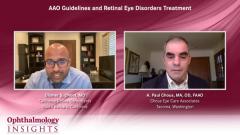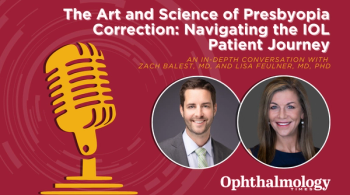
Retinal Eye Disorders: Co-Management and Patient Relationships
Key opinion leaders discuss how co-management affects the patient-provider relationship in the treatment of retinal eye disorders.
Episodes in this series

Dilsher S. Dhoot, MD: Another follow-up question to this is how does co-management affect the provider-patient relationship or the patient-provider relationship? What do you think about that?
A. Paul Chous, MA, OD, FAAO: Hopefully in a positive way. Hopefully patients feel that the retina specialist is doing what he or she is most experienced and skilled at treating, and that their primary eye care provider, whether it’s a general ophthalmologist or an optometrist, can manage the rest of their ophthalmic needs, if you will. I think that collaborative relationships are a win-win situation. I don’t really see any circumstance in which it’s a negative, unless the 2 providers are providing education that is distinctly at odds with one another. To the point you already made earlier, I think it’s a good idea to use “may” when you’re explaining to a patient why you are referring a patient to a retina specialist. The retina specialist “may” consider one of these, let’s say, ocular injections to improve your disease or make your vision better or keep your sight from getting worse.
I think that generally the relationship is enhanced if we’re working in a team fashion. There are a lot of members of the patient’s care team. That’s a great model specifically in diabetes, again, where patients are seeing oftentimes 8 to 10 different subspecialists for all of the complications that they’ve encountered as a result of having diabetes.
Dilsher S. Dhoot, MD: Yes, I think you’re exactly right.
TRANSCRIPT EDITED FOR CLARITY
Newsletter
Don’t miss out—get Ophthalmology Times updates on the latest clinical advancements and expert interviews, straight to your inbox.





















































